Generally speaking, there is no need to add worms in raised bed garden! Worms will find their way to the raised bed garden through the cardboard. But if you just built a new bed garden, it will take some time before worms find the way to your new bed. So it is good to cheat for once, for your bed.
In this post, I will tell you about everything about worms, how to produce them naturally at home? Best kind of worms, Why we need worms? etc.
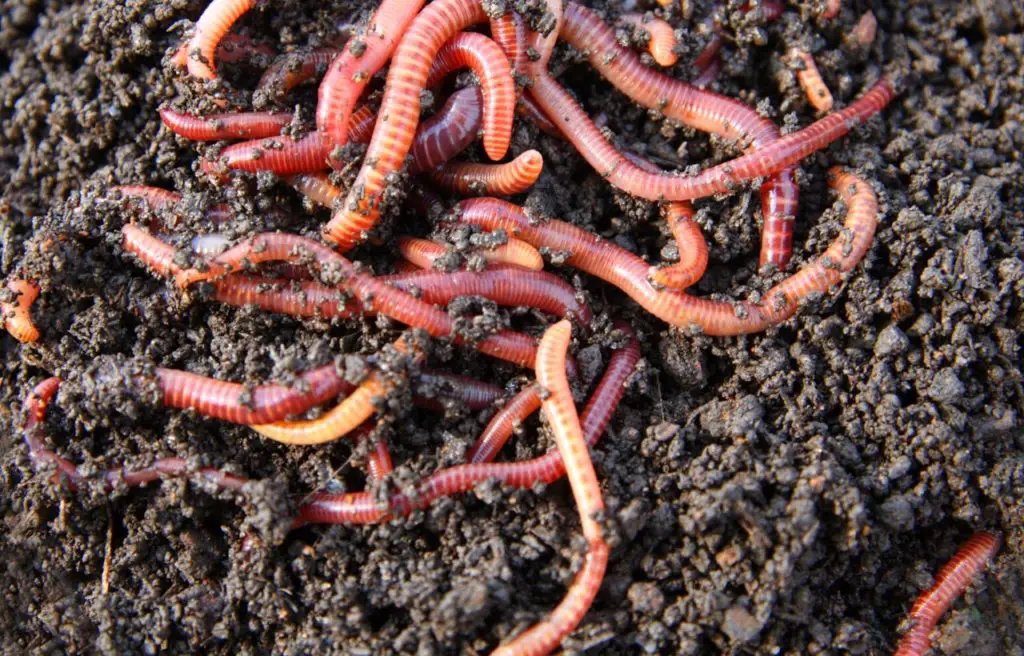
Why we need worms in a raised bed garden?

Worms are often called as the doctors of topsoil. Their activities in the soil have so many benefits!
1: Nutrients Availability Improvement!
Worms eat plant debris like dead leaves and roots etc. Casts of worms are very rich in nutrients as compared to the soil around them. A lot of readily available nitrogen is present in their casts for plants to use.
According to research in New Zealand, worms casts has 4 times more phosphorus than surface soil. Worms have tunnels, and they leave their casts in tunnels (full of nutrients).
Tunnels casts are best of root growth. The tunnels system of worms allows the roots of plants to grow deeper in the soil and get some bonus moisture and nutrients.
2: They improve drainage:
If the soil of your raised bed is old, it means it is a compact soil. Worms can do a lot of work for you. Their channelling and burrowing can loosen up the soil, which can increase the aeration of the soil and improve drainage.
According to research, soil with worms can drain 10x faster than soil without worms. Water infiltration is 6 times better in soil with worms.
3: They improve soil structure:
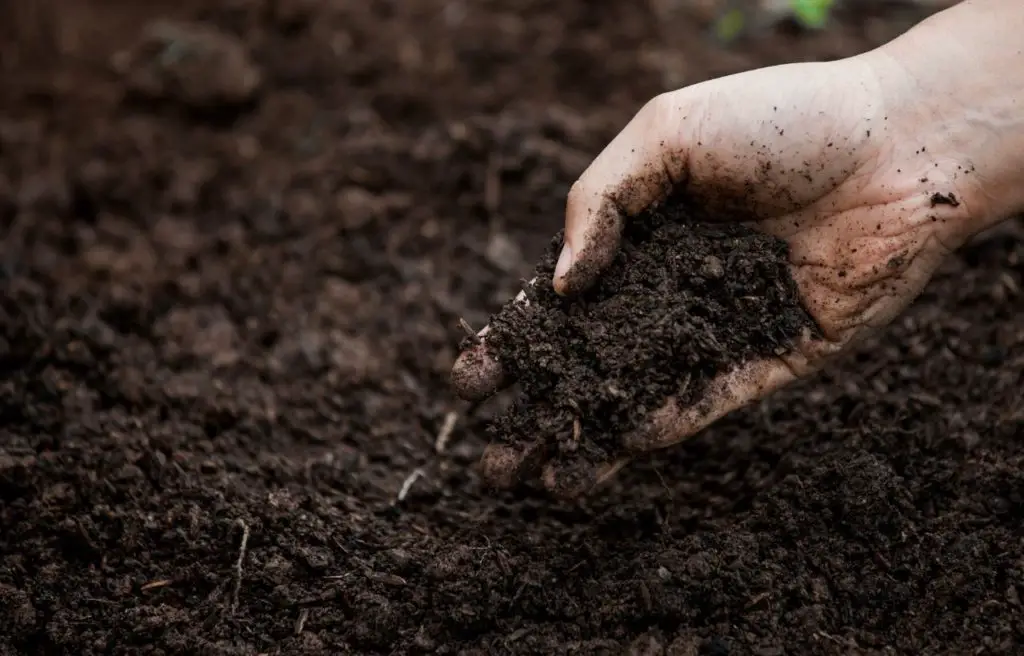
Soil structure is a very important factor in the raised bed garden. Good soil structure can store a lot more moisture in it. The casts of worms act as a cementing agent and cement the soil particles to make aggregates.
These aggregates are good at storing moisture. Worms also make good topsoil by leaving their casts on the surface. In an experiment, earthworms make topsoil of 18cm in 30 years of a time period.
4: They improve productivity:
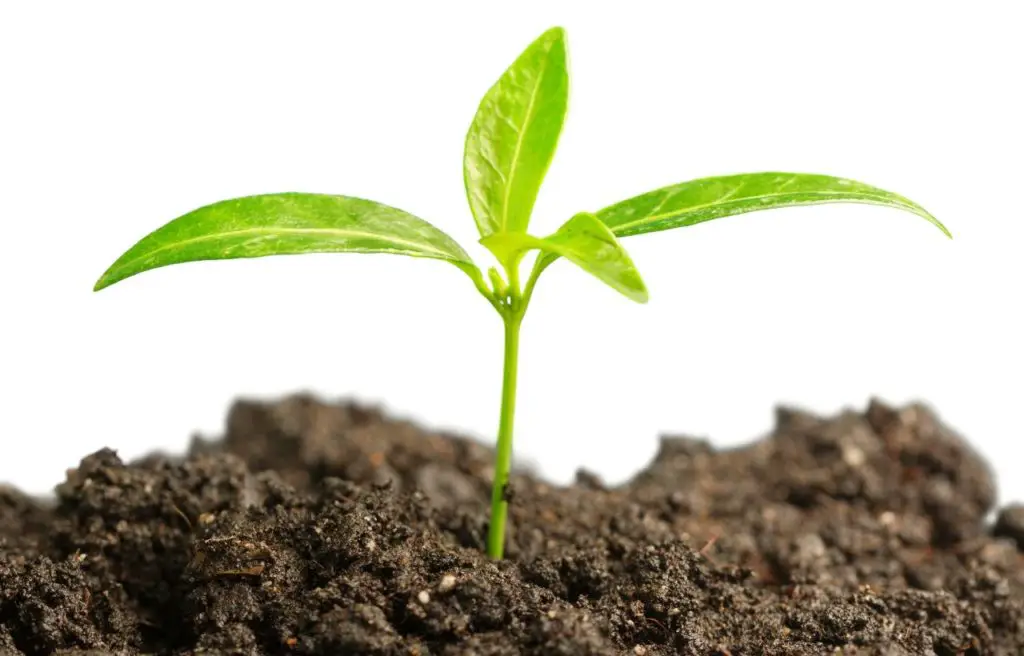
This is not a secret now. Worms improve drainage, nutrient availability and improve soil structure. These factors improve productivity directly or indirectly. According to research, an acre with 50000 worms in it can make casting up to 50 tons.
And we all know how important and great is casting of worms for plants. We sure don’t need 50 tons, but we can use a few grams in our raised bed garden.

Not All The Worms Have Benefits
Yes! It is true. All the worms are not good and they cannot do all the work I mentioned above. There are 1800 species of Encyclopedia Britannica. Some of these species are good and open up the soil, some of them do the exact opposite.
Means they compact the soil. That’s terrible. So it is really important that you do research before introducing worms to your bed. According to research, North America is worm less from thousands of years. They introduce worms in North America and they start to destroy the forest by destroying the litters deep surface.

Here I will discuss some good species of worms.
Beneficial worms you can add in raised bed garden
1: Lumbricus Terrestris:
They are anecic worms. They are the largest species of earthworms. They are present all around the world. Their size is ranging from 20-25 cm. A specimen of this species found in CW China in 2012, the size of that specimen is around 50 cm.
They are often called as common earthworm or lobworm. Generally, they feed on plants dead leaves, but they can also get food from dead insects and faeces. They make burrows deep in the soil, come to the surface for feeding. They put dead leaves or insects in mouth and partially digest their food here and then eat it.
2: Lumbricus rubellus:
These worms also called as red earthworms. Their size is 25mm to 105mm in length. The body is comprised of smooth reddish and semi-transparent segments. They prefer soil with high organic matter.
Need a high moisture level of soil for gas exchange. They mostly food on the organic matter with high decomposition state. They make it easier for plants to uptake nutrients by increasing the rate of transfer of matter through each trophic level.
3: Allolobophora Caligninosa:
They are mostly found in Great Britain and commonly known as grey worms. They have 3 distinct shades of colour on the front. When they are not moving, their size is 6cm. They mostly found in burrows of topsoil. They feed on the soil rich in organic matter.
4: Eisenia fetida:
They have so many common names: redworm, brandling worm, panfish worm, trout worm, tiger worm, red wiggler worm, red Californian earthworm etc. They are best in performers in rotting veggies, compost and manure.
They are widely used in decaying of industrial and domestic waste. They mostly found in Europe but now cultivated all over the world. They are also being used in flushless toilets.
5: Eisenia hortensis:
They are commonly known as European Nightcrawlers. They have a medium size. When are fully grown they have the weight of 1.5g. Blueish, ping grey clour of body.
These worms found in garden soil which is rich in organic matter and in the deep woodland litter. A medium with a higher carbon to nitrogen ration is best for them. It means they do very well in compost pits.
6: Perionyx excavatus:
These worms are commercially produced worms. They are composting worms, known as blue or Indian blue. They are very popular in the market for making fast worm castings. They are best for tropical and subtropical regions.
Their size is 1-3 inches. Have 2 different colours, the head is purple and hinds parts are red-brown.
7: Amynthas Gracilis:
These worms can grow up to 4-6 inches long. Have pink or brown colours. They do well in warm weather. The presence of these worms can increase the porosity of soil and improve the circulation of water in the soil.
8: Eudrilus eugeniae:
They are also called as African Nightcrawlers. They are native to tropical West Africa but now they are spread all over the world in warm regions. The best temperature for them is 50-degrees. They can grow up to 10 inches long and 2.5g in just 8-10 weeks.
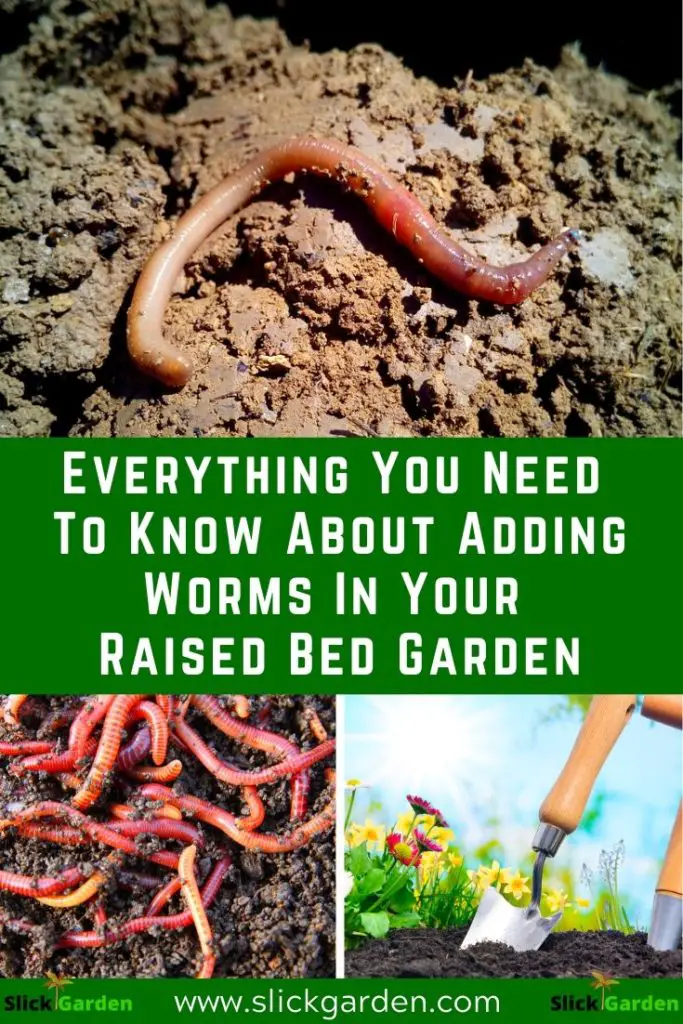
How To Introduce Worms In Your Raised Bed Garden:
The best time to introduce good worms in your soil, is spring. Here are a few simple steps to introduce good worms:
- Buy some cornmeal about 1-2 pounds and sprinkle on some part of your raised garden.
- Use shovel to mix the topsoil of the raised bed with cornmeal.
- Water this area by and keep moisture level higher. Too wet is going to harm the plan.
- In just 30 days, bacteria will produce in that area, which will help in the activity of worms.
- During this period, add a pound of cornmeal every 2 weeks.
- You can also use organic matter like compost or manure instead of cornmeal. Organic matters attract earthworms as well as add nutrients to your soil.
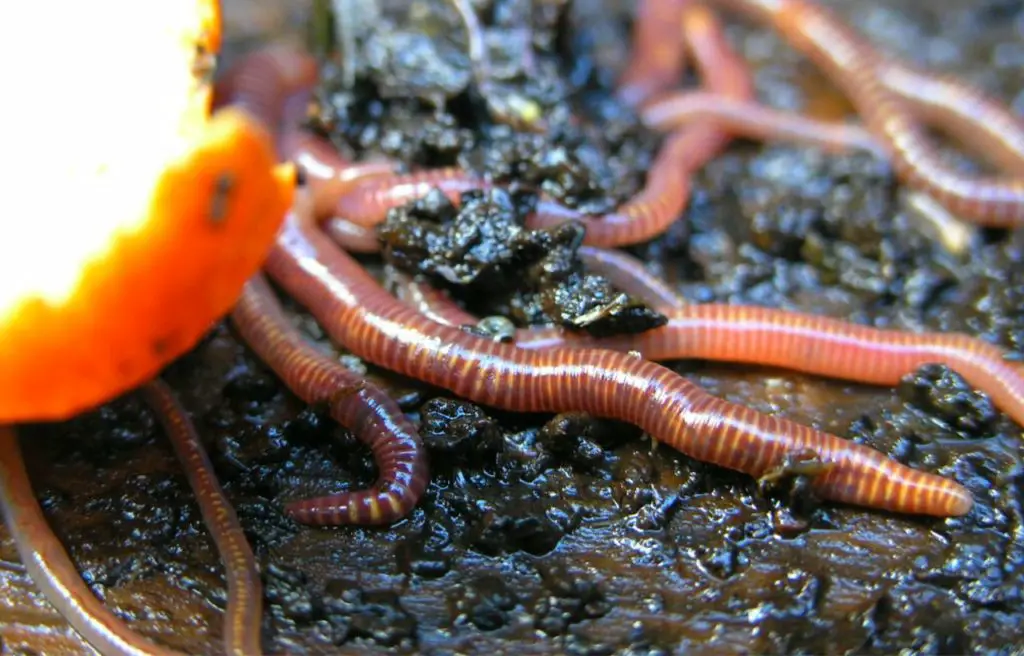
Here is another simple method to introduce and attract worms:
Buy a cheap bag of organic manure and make a long slit on the belly of the bag. Pick a shady place and put the bag of manure at that place. Remember, put the bag slit side down.
Do this in autumn and the bag of manure will be filled with worms and offsprings by the time of spring. Now put these worms in your raised bed garden filled with compost.
Some Tips To Take Care Of Your Worms:
Worms are very sensitive to their diet and environment. Here is how you can protect them from harsh conditions.
1: Add Compost Or Manure:
Some people just wanted to win the race and buy a big bucket of worms and put in their raised bed garden, and thought that will increase the castings. But that’s not how it works. Worms will die or run away. You need to add organic compost and manure to keep them at your work.
2: Heat and Moisture:
Most of the worms prefer warm temperature. They do their best in warm temperature. If you wanted to introduce them, spring is the best times. Keep your soil moisturized at a temperature of 15-30 degree celsius. If you live in a very warm temperature, you can still keep them alive by keeping moisture level a little higher. Not too much higher.
3: Less Tilling:
I know tilling is good for the soil. But too much tilling or digging is harmful o worms. According to Agriculture research, more tilling means fewer worms. Some people believe, if a worm cut into two, it will regrow into two like a starfish. But unfortunately, it is a big lie.
This is the best part of the raised bed garden. You can just add some compost on the top of it. There is no need for tilling. No back pain and no murder of worms.
4: Add Mulch:
Worms love moisture. We already talk about this. In very warm conditions, add some mulch to reduce the evaporation process. Adding mulch is also good for your plants.
(Read More)
- Everything You Need To Know About Preparing A Garden Bed For Planting Vegetables
- How Often Should I Water A Raised Vegetable Garden? Dos and Don’ts.
- Soil For Raised Bed: Raised Bed Gardening Soil Mix Recipe
I hope you enjoy this article. Share it with your friends and family.
